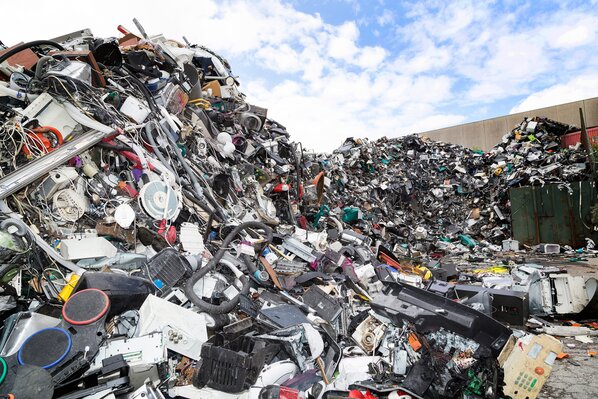Planned obsolescence has become a critical challenge in a connected world
Imagine if someone were to tell you in the early 2000s: This vision for smartphones of the future is novel. Manufacturers are going to make the batteries non-removable, and you’ll have to discard the phone when the battery eventually wears out. It’s also very fragile with a glass back. It can cost upwards of a lakh, and you should buy it now to flaunt it as a status symbol.
Back then, you might think that such a product notion is far too ridiculous to be sellable, and the idea itself is bonkers. Yet, in 2022, such devices have become humdrum reality. We have come to unconsciously accept products that are not in the best interests of consumers and mostly serve as temporary status symbols that feed the bottom lines of smartphone manufacturers everywhere. The problem of a built in mechanism to facilitate obsolescence isn’t relegated to smartphones but laptops, TWS earphones, and a plethora of other gadgets. Today. it has become an accepted part of our everyday lives.
“Conceptually, built-in-obsolescence or planned obsolescence can trace its roots all the way back to 1928: Justus George Frederick penned the concept that year. The idea was to necessitate people to buy an increasing number of things, not to use them but to impel trade and commerce.”
In essence, the technique of engineering items to breakfast or become outdated in the short to medium term is known as planned obsolescence. The overall goal is to stimulate the purchase of new items and upgrades, which has been prohibited in several nations.
A growing ecological problem
Most organisations in the technology space would try and refute any claims of planned obsolescence despite the world facing a growing e-waste problem. It is estimated that more than 50 million tonnes of it were produced globally every year, with just around 20% of it being legally recycled. Large domestic appliances, heating and cooling equipment accounted for half of the 50 million tonnes. TVs, laptops, cellphones, and tablets made up the rest.
Globally, e-waste volumes are increasing. They increased by 21% in the five years leading up to 2019, when 53.6 million metric tonnes of e-waste were created, according to the Global E-waste Statistics Partnership (GESP). Last year’s e-waste weighed as much as 350 cruise ships lined up end to end to form a 125-kilometer stretch. This trend is expected to continue as the usage of computers, cellphones, and other gadgets grows owing to quicker rates of obsolescence.
Presently, modest steps are being taken throughout the world to put a stop to this culture of obsolescence. Apple has agreed to pay up to $500 million via settlements in the United States over claims that software updates caused earlier iPhones, such as the iPhone 6, 6s Plus, 7, and 7 Plus, to slow down (the company denied any wrongdoing, and insisted the technique prevented older devices from shutting down altogether). The identical infraction resulted in a punishment of €25 million (£21 million) in France.
Understanding planned obsolescence better
Conceptually, built-in-obsolescence or planned obsolescence can trace its roots all the way back to 1928: Justus George Frederick penned the concept that year. The idea was to necessitate people to buy an increasing number of things, not to use them but to impel trade and commerce.
Today, planned obsolescence has become ubiquitous and there is no escaping it for consumers. For instance, the average lifespan of a smartphone is 2 to 3 years, wherein individuals are expected to change devices as they are perceived to be out of vogue. A story by The New York Times highlights how software updates tend to artificially cripple the performance of older devices thereby compelling consumers to make a new purchase. While this story is a few years old, it still holds true today for most smartphones. Sounds nefarious, doesn’t it?
There is a certain degree of cognizance about planned obsolescence practices and steps are being taken to instil change. For instance, according to news reports, Apple has agreed to pay up to $500 million in settlements in the United States over claims that software updates caused earlier iPhones, such as the iPhone 6, 6s Plus, 7, and 7 Plus, to slow down (the company denied any wrongdoing, and insisted the technique prevented older devices from shutting down altogether). The identical infraction resulted in a punishment of €25 million (£21 million) in France. A Brussels-based organisation called the European Environmental Bureau is also keenly scrutinized planned obsolescence practices. The EU is creating a framework that applies to household devices, laptops, tablets, and smartphones to keep planned obsolescence in check.
Finally, the onus is on consumers to keep manufacturers accountable. They must ensure that the devices they purchase are from manufacturers who have a respectable track record of support. The changes will take time but once the EU comes up with a framework to keep planned obsolescence in check, other countries are expected to follow suit.



